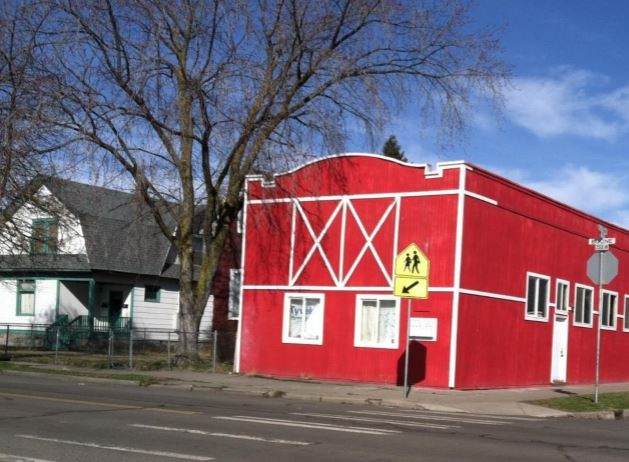City of Spokane opens possibility of reuse for corner stores
Thursday, May 4, 2017

Corner stores provide historic residential neighborhoods with character and convenience. But many that were later abandoned, converted, or rezoned, struggle with maintenance and repair as they are now prevented from restoring a former commercial activity.
To assist an investigation into whether such structures might again be permitted to contribute to the community as a reestablished commercial use, or small multifamily building or office, the City Planning & Development Department will conduct open houses Thursday, May 4 and Tuesday, May 9 to engage in community discussion about a proposed revision to the Spokane City Zoning Code.
This initiative would expand an area where pre-existing commercial structures in residential zones may be reused for low-impact neighborhood scale and neighborhood serving businesses. An existing pilot code allowing sites that were historically stores or other commercial uses to reopen as a new commercial use is currently limited to West Central Spokane.
This initiative is meant to increase the diversity of options for small businesses in a manner that has a minimal impact to neighbors, while encouraging active, walkable retail and other commercial uses. Changes to West Central would include new specifications for limited expansions to existing structures.
The City of Spokane will host two open houses to invite citizens to provide input before the proposal is considered by the Plan Commission and eventually the Spokane City Council. The first event will be held on Thursday, May 4, from 4:30 to 6 p.m. at West Central Community Center, 1603 North Belt Street. The second open house will be held on Tuesday, May 9, from 5 to 7 p.m. at East Central Community Center, 500 South Stone Street.
Public Open House
4:30 PM – 6:00 PM, Thursday, May 4, 2017
West Central Community Center
1603 North Belt Street, Spokane, WA
Public Open House
5:00 PM – 7:00 PM, Tuesday, May 9, 2017
East Central Community Center
500 South Stone Street, Spokane, WA
Description of Project
This initiative would expand the area where pre-existing commercial structures in residential zones may be reused for low-impact neighborhood scale and neighborhood serving businesses. An existing pilot chapter of Spokane Municipal Code adopted in 2012 that allows such development is limited to the West Central neighborhood (see Chapter 17C.370 SMC, Existing Neighborhood Commercial Structures in Residential Zones).
Allowed uses include:
- Office uses found in SMC 17C.190.250;
- Retail sales and service uses found in SMC 17C.190.270; and
- Uses allowed within the RMF zone found in SMC 17C.110.100.
Uses NOT allowed include:
- Sale or leasing of motorized consumer vehicles
- Fire arms
- Weapons
- Medical marijuana sales
Possible Options to Consider Under Proposed Expansion
Locations
- Existing neighborhood commercial structures located in residential zones on a designated arterial street.
Quantity/Time Limit:
- No limit to number of activated existing neighborhood commercial structures within the pilot period, with proposed 2-year pilot.
Size Limit:
- Limit building footprint area of converted use to less than 3,000 square feet (requires an administrative conditional use permit); or
- Limit building footprint area of converted use to 5,000 square feet or less, and require a public hearing and Hearing Examiner approval for structures between 3,000 sq. ft. and 5,000 sq.ft. (structures less than 3,000 square feet would still require an administrative conditional use permit); and/or
- Require a Hearing Examiner approval for additions to eligible existing structures (or parking areas).
Get Involved
How will the public be involved: The public is invited to participate by attending meetings and providing written comments throughout the process. City staff is available and encourages the public to contact the Planning and Development Department for information.
What feedback is or will be needed: Written comments on the proposal are needed as the ordinance text is developed and decisions to adopt it are made to:
- Consider how the proposal will help achieve the City's planning goals
- Explore how the restoration of a commercial use in an existing neighborhood commercial structure might change or impact the neighborhood
- Identify likely issues resulting from the activation of existing neighborhood commercial structures
Related Documents
- Initiative and Project Information (PDF 110 KB)
- Presentation to Land Use Committee - April 20, 2017 (PDF 7.4 MB)
- Draft Map and List of Potentially Eligible (PDF 1.2 MB)
- Draft Ordinance (PDF 582 KB)
- Application (PDF 220 KB)
- Environmental Checklist (PDF 967 KB)
- Frequently Asked Questions (PDF 70 KB)
Related Links